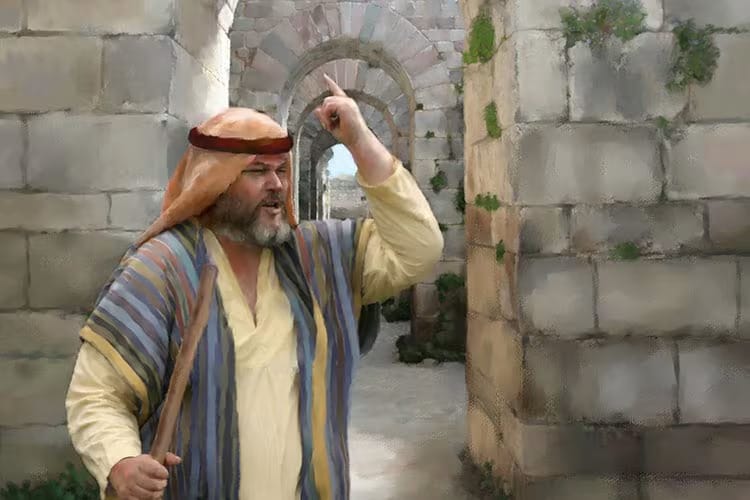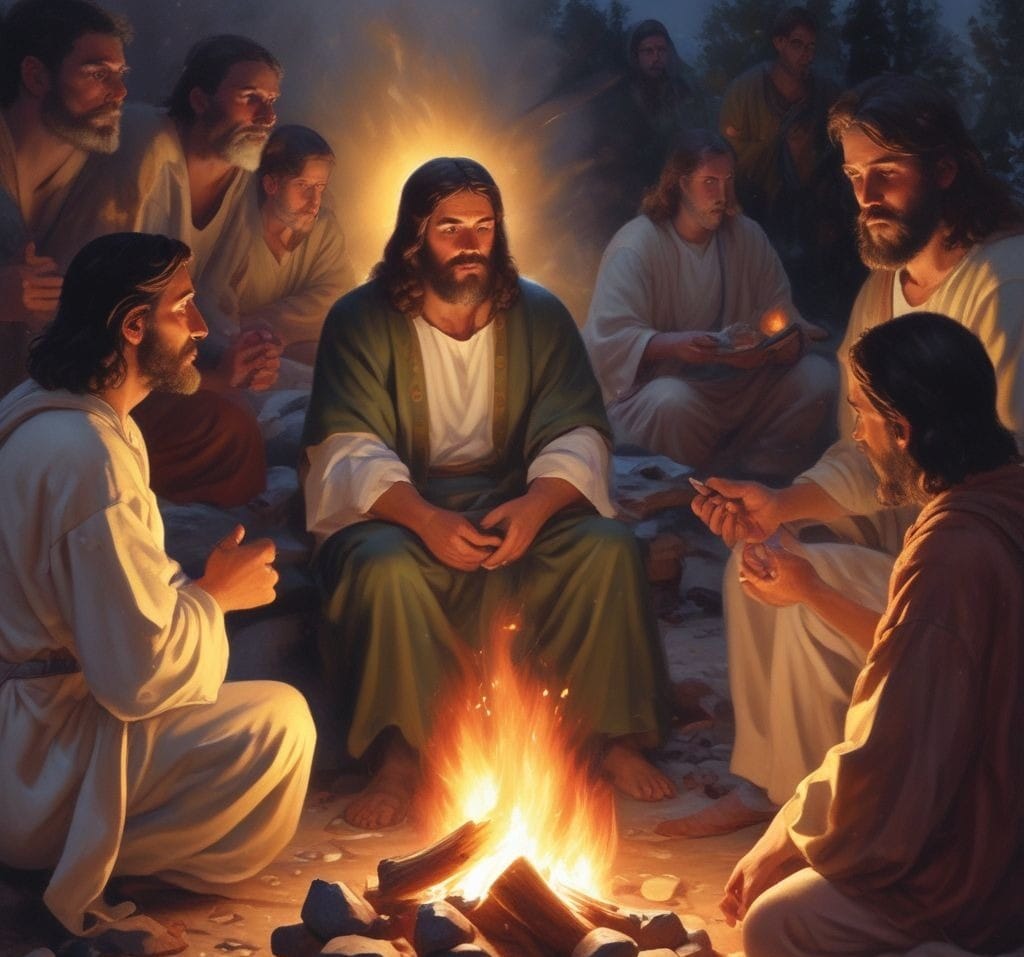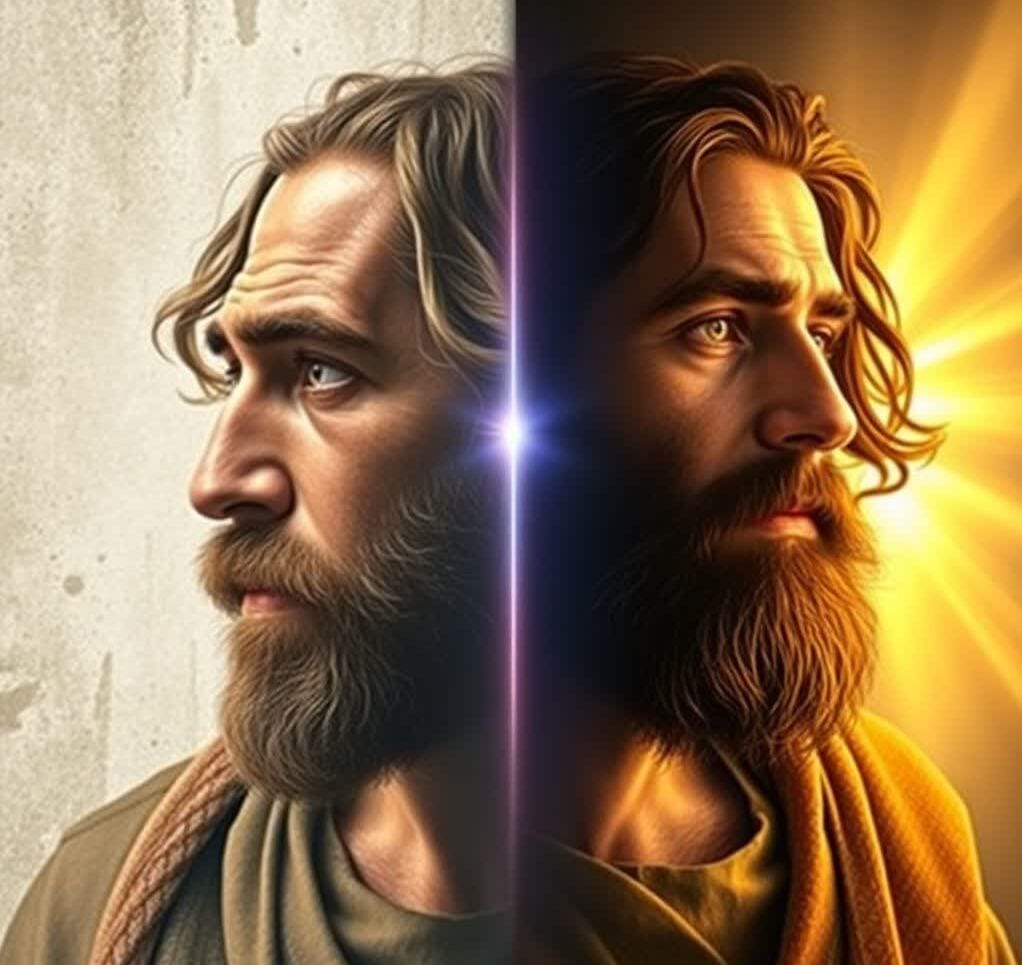Philip The Apostle – Unveiling the Hidden Life of a True Disciple

Table of Contents
Introduction – Why Philip the Apostle Matters Today
Philip’s Humble Beginnings: Life Before Discipleship
The Divine Calling: Jesus Finds Philip
Philip Brings Nathanael to Christ – A Model of Evangelism
Philip’s Quest for Understanding: His Deep Questions to Jesus
“Show Us the Father”: What Philip’s Request Truly Meant
The Role of Philip in Feeding the Five Thousand
Philip and the Greeks – A Messenger to the Outsiders
The Lesser-Known Writings and Sermons of Philip
The Missionary Journeys of Philip – From Judea to Phrygia
Miracles and Converts – Signs That Followed Him
His Martyrdom: The Last Testimony of a Devoted Disciple
Philip’s Love for the Nature of Christ in His Teachings
Philip vs Philip the Evangelist – Clearing the Confusion
Legends and Ancient Texts about Philip the Apostle
What Common People Don’t Know about Philip
Philip’s Legacy in the Early Church
Churches and Traditions Honoring Saint Philip Today
Lessons from Philip the Apostle for Modern Believers
Conclusion – A Life of Humble Faith, Enduring Mission, and Eternal Reward
Introduction – Why Philip the Apostle Matters Today
Philip the Apostle, though less prominent than apostles like Peter or John, holds a significant place in Christian history as a faithful seeker and evangelist. As one of Jesus’ Twelve Apostles, Philip the Apostle was among the first to follow Christ, playing a pivotal role in introducing Nathanael to the Messiah (John 1:45-46). His life, marked by earnest questions and a commitment to sharing the gospel, resonates with believers and seekers today who grapple with faith and the desire for spiritual truth.
Philip the Apostle’s interactions with Jesus, particularly his request to “show us the Father” (John 14:8), reveal a disciple eager to understand the divine. His missionary journeys, though sparsely documented in scripture, are celebrated in traditions that describe him preaching in Greece, Syria, and Phrygia. The discovery of his tomb in Hierapolis in 2011 further underscores his enduring legacy. This biography explores the untold story of Philip the Apostle, focusing on lesser-known aspects of his life, from his humble beginnings to his martyrdom, offering insights for modern believers.
✨ For more explorations into the Scriptures and insights on God’s divine plan, visit our Bible blog filled with faith-inspired articles.
Philip’s Humble Beginnings: Life Before Discipleship
Philip the Apostle hailed from Bethsaida, a fishing village in Galilee, also home to Peter and Andrew (John 1:44). Little is known about his early life, but as a Galilean, he likely engaged in fishing or agriculture. His Greek name, “Philip,” suggests possible Hellenistic influences, common in Galilee due to its proximity to Greek-speaking regions. Before meeting Jesus, Philip the Apostle was likely a follower of John the Baptist, indicating a pre-existing spiritual hunger (John 1:43).
This humble background shaped Philip the Apostle’s perspective, grounding him in the everyday realities of Galilean life while preparing him for a divine calling. His familiarity with John the Baptist’s teachings positioned him to recognize Jesus as the promised Messiah.
Lesson: Philip the Apostle’s ordinary origins remind us that God calls people from all walks of life to serve His purpose.
The Divine Calling: Jesus Finds Philip
The Gospel of John recounts the moment when Jesus called Philip the Apostle. After summoning Andrew and Peter, Jesus traveled to Galilee and found Philip, saying simply, “Follow me” (John 1:43). This direct invitation marked the beginning of Philip the Apostle’s journey as a disciple. Unlike other apostles called from their work, Philip was already seeking spiritual truth, possibly influenced by John the Baptist’s ministry.
Philip the Apostle’s immediate response was to share his discovery with Nathanael, demonstrating his evangelistic zeal from the outset. This calling was not just a personal transformation but the start of a mission to bring others to Christ.
Lesson: When Jesus calls, our response should be swift and wholehearted, trusting in His plan.
Philip Brings Nathanael to Christ – A Model of Evangelism
One of Philip the Apostle’s most significant acts was introducing Nathanael to Jesus. After his calling, he found Nathanael and declared, “We have found the one Moses wrote about in the Law, and about whom the prophets also wrote—Jesus of Nazareth, the son of Joseph” (John 1:45). When Nathanael expressed skepticism about Nazareth, Philip the Apostle responded with a simple invitation: “Come and see” (John 1:46). This led to Nathanael’s encounter with Jesus and his confession of faith (John 1:49).
Philip the Apostle’s approach—inviting rather than arguing—offers a timeless model for evangelism. His confidence in Jesus’ identity allowed him to guide others to experience Christ firsthand.
Lesson: Effective evangelism invites others to encounter Jesus personally, trusting in His power to transform.
Philip’s Quest for Understanding: His Deep Questions to Jesus
Philip the Apostle is portrayed in the Gospel of John as a disciple who sought deeper understanding. During the Last Supper, he asked Jesus, “Lord, show us the Father, and that will be enough for us” (John 14:8). Jesus replied, “Don’t you know me, Philip, even after I have been among you such a long time? Anyone who has seen me has seen the Father” (John 14:9). This exchange highlights Philip the Apostle’s desire to grasp the divine nature of Christ.
Another instance occurred during the feeding of the five thousand, when Jesus asked Philip the Apostle where to buy bread for the crowd. Philip’s practical response—“It would take more than half a year’s wages to buy enough bread for each one to have a bite!” (John 6:7)—revealed his focus on material challenges, setting the stage for Jesus’ miracle.
Lesson: Our questions, even if imperfect, can lead to profound revelations from God.
“Show Us the Father”: What Philip’s Request Truly Meant
Philip the Apostle’s request to see the Father reflects a deep human longing for a tangible experience of God. In the Jewish context, seeing God was associated with divine revelation, often reserved for prophets. Jesus’ response, “Anyone who has seen me has seen the Father” (John 14:9), clarified that He is the visible manifestation of God (Colossians 1:15). This teaching underscores the Christian belief in Jesus’ divinity, a cornerstone of theology.
Philip the Apostle’s question, though seemingly naive, prompted one of Jesus’ most significant statements about His identity, illustrating how God uses our inquiries to reveal truth.
Lesson: Seeking God leads us to Jesus, who reveals the Father’s heart.
The Role of Philip in Feeding the Five Thousand
In the miracle of the feeding of the five thousand (John 6:1-14), Jesus tested Philip the Apostle by asking where to buy bread for the crowd. Philip’s response, focusing on the impossibility of the task (John 6:7), showed his practical mindset but also his limited faith at that moment. Jesus then multiplied five loaves and two fish, feeding thousands, demonstrating His divine power.
Philip the Apostle’s role, though minor, highlights how God can work through our doubts to accomplish His purposes, using ordinary moments to reveal extraordinary truths.
Lesson: God’s provision often surpasses our expectations, even when we doubt.
Philip and the Greeks – A Messenger to the Outsiders
Philip the Apostle played a unique role when Greeks approached him, saying, “Sir, we wish to see Jesus” (John 12:21). Likely due to his Greek name or language skills, he was their point of contact. He consulted Andrew, and together they informed Jesus. This incident signifies Philip the Apostle’s role as a bridge to non-Jewish seekers, foreshadowing the gospel’s universal reach.
His openness to outsiders reflects the inclusive nature of Christ’s mission, a principle central to early Christianity.
Lesson: We are called to connect all people to Jesus, regardless of cultural barriers.
The Lesser-Known Writings and Sermons of Philip
While the New Testament does not preserve specific teachings from Philip the Apostle, apocryphal texts offer glimpses into his perceived ministry. The Gospel of Philip, a 3rd-century Gnostic text from the Nag Hammadi library, mentions Philip but focuses on Gnostic theology rather than his teachings (Gospel of Philip). The Acts of Philip, another apocryphal work, attributes prayers and sermons to him, such as: “O Lord, God of all, who hast redeemed us by the precious cross of Thy Christ, grant unto us to follow Him even unto death.”
These texts, though not historically reliable, reflect early Christian admiration for Philip the Apostle’s devotion.
Lesson: Our lives can proclaim Christ’s message, even without recorded words.
The Missionary Journeys of Philip – From Judea to Phrygia

Tradition holds that Philip the Apostle preached in Greece, Syria, and Phrygia after Jesus’ ascension. The Acts of Philip describes his travels, often with his sister Mariamne and Bartholomew, including a journey to Hierapolis (Acts of Philip). One account tells of Philip raising a girl from the dead, leading to conversions but also persecution.
These stories, while legendary, suggest Philip the Apostle’s significant impact on early Christian communities in Asia Minor.
Lesson: Spreading the gospel requires courage and faith in hostile environments.
Miracles and Converts – Signs That Followed Him
The Acts of Philip attributes numerous miracles to Philip the Apostle, including healing the sick, casting out demons, and defeating a serpent in a pagan temple, symbolizing Christ’s triumph over idolatry. These miracles, though apocryphal, underscore the belief that God’s power accompanied the apostles’ ministry.
Such stories highlight Philip the Apostle’s role in demonstrating God’s presence through signs and wonders.
Lesson: Miracles point to God’s power and invite others to faith.
His Martyrdom: The Last Testimony of a Devoted Disciple
According to the Acts of Philip, Philip the Apostle was martyred in Hierapolis after converting the proconsul’s wife, enraging the authorities. He and Bartholomew were crucified upside down, but while Bartholomew was released, Philip chose to remain on the cross, preaching until his death (Acts of Philip). Another tradition suggests he died naturally, illustrating the variability of accounts (Saint Philip).
His martyrdom, whether by crucifixion or natural causes, symbolizes his unwavering commitment to Christ.
Lesson: Faithfulness to Christ may demand the ultimate sacrifice.
Philip’s Love for the Nature of Christ in His Teachings
Philip the Apostle’s question about seeing the Father (John 14:8) reveals his fascination with Christ’s divine nature. While no direct teachings are recorded, his interactions with Jesus suggest a focus on understanding Jesus as the revelation of God. Apocryphal texts like the Acts of Philip emphasize Christ’s redemptive work, aligning with early Christian theology.
Lesson: Exploring Christ’s nature deepens our faith and devotion.
✨ For more explorations into the Scriptures and insights on God’s divine plan, visit our Bible blog filled with faith-inspired articles.
Philip vs Philip the Evangelist – Clearing the Confusion
Philip the Apostle is often confused with Philip the Evangelist, a deacon in Acts 6:5 known for baptizing the Ethiopian eunuch (Acts 8:26-39) and living in Caesarea with four prophetic daughters (Acts 21:8-9). Philip the Apostle, a Galilean disciple, appears primarily in John’s Gospel, while the Evangelist’s ministry is detailed in Acts (Philip the Evangelist).
Aspect | Philip the Apostle | Philip the Evangelist |
|---|---|---|
Role | One of the Twelve Apostles | One of the Seven Deacons |
Key Biblical References | Gospel of John (1:43-46, 6:5-7, 12:21, 14:8-9) | Acts (6:5, 8:26-39, 21:8-9) |
Hometown | Bethsaida, Galilee | Unknown, active in Jerusalem and Caesarea |
Notable Acts | Introduced Nathanael to Jesus | Baptized Ethiopian eunuch |
Legends and Ancient Texts about Philip the Apostle
Beyond the Acts of Philip, early church fathers like Polycrates of Ephesus and Caius the Presbyter mention Philip the Apostle’s burial in Hierapolis, possibly with two daughters, though these may belong to the Evangelist (Catholic Encyclopedia). The Gospel of Philip references him minimally, focusing on Gnostic themes.
These texts, while not canonical, reveal how early Christians venerated Philip the Apostle.
Lesson: Traditions enrich our understanding of early Christian devotion.
What Common People Don’t Know about Philip
Many are unaware of Philip the Apostle’s role in introducing Nathanael to Jesus or his profound questions. His missionary journeys, martyrdom, and the 2011 tomb discovery in Hierapolis are often overlooked. These lesser-known aspects highlight his significance beyond the biblical narrative.
Lesson: Exploring hidden stories deepens our appreciation of faith heroes.
Philip’s Legacy in the Early Church
Philip the Apostle’s legacy endures in church traditions and liturgy. He is commemorated on May 3 in the Roman Catholic Church and November 14 in the Eastern Orthodox Church (Philip the Apostle). His relics are venerated in Rome’s Basilica Santi Apostoli and other sites. The 2011 discovery of his tomb in Hierapolis, part of a pilgrimage complex, underscores his historical impact.
Lesson: Philip’s legacy inspires ongoing devotion and worship.
Churches and Traditions Honoring Saint Philip Today
Saint Philip the Apostle is honored in churches worldwide, often depicted with a cross or loaves, symbolizing his martyrdom and role in the feeding of the five thousand. The Church of the Holy Apostles in Constantinople, built by Justinian, venerated Philip among others. Modern churches, like St. Philip’s in Cheektowaga, New York, continue his legacy.
Lesson: Honoring saints connects us to the church’s historical roots.
Lessons from Philip the Apostle for Modern Believers
Philip the Apostle’s life offers timeless lessons:
Evangelism: Invite others to “come and see” Jesus.
Seeking Truth: Ask questions to deepen faith.
Faithfulness: Remain committed despite challenges.
Inclusivity: Reach out to all, as Philip did with the Greeks.
Sacrifice: Be willing to give all for Christ.
Lesson: Philip’s example guides us in living out our faith.
Conclusion – A Life of Humble Faith, Enduring Mission, and Eternal Reward
Philip the Apostle’s journey from a Galilean fisherman to a martyred evangelist exemplifies the transformative power of faith. His questions, evangelism, and sacrifice inspire believers to seek Christ, share the gospel, and stand firm. As we reflect on Philip the Apostle’s life, may we follow his example, trusting in God’s eternal reward.
✨ For more explorations into the Scriptures and insights on God’s divine plan, visit our Bible blog filled with faith-inspired articles.
